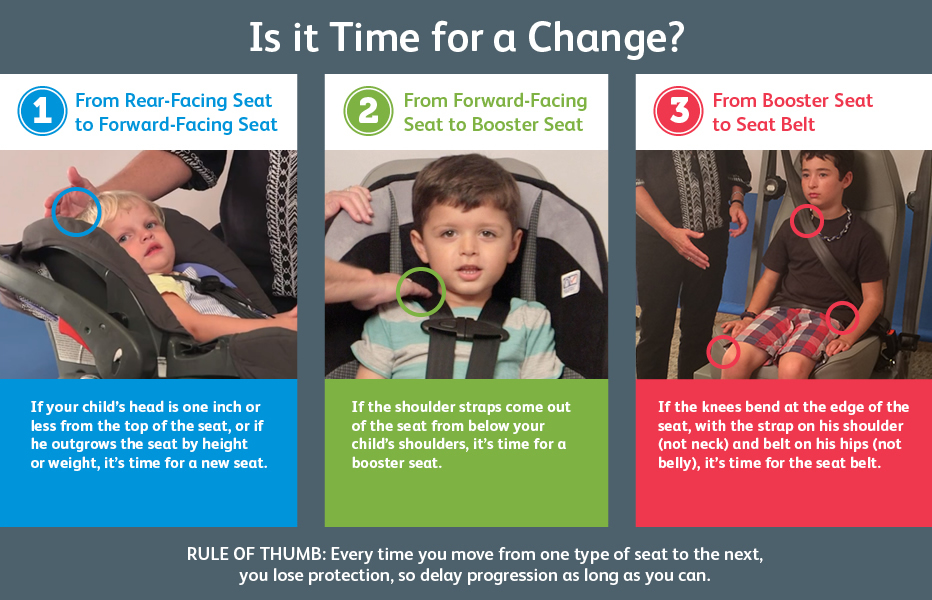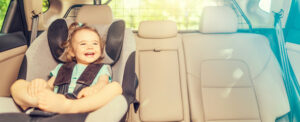When we found out we were pregnant with our first, my initial thought was excitement. My very next thought was “OMG, I’m in charge of this little person’s life!!” As someone that has struggled with anxiety most of her life, adding a helpless newborn into the mix, while I was thrilled, also added to the plate of stress. And not the “did I leave the garage door open” kind of stress, the “how do I keep this child alive” type of anxiety. How did I cope? Education!! We took *all* of the prenatal classes we could and our very favorite was the car seat safety course from Helen DeVos Children’s Hospital in Grand Rapids. Did you know a a whopping 75% of car seats are installed incorrectly?! The Injury Prevention team at Helen DeVos taught us the differences between the types of car seats, how to install it, and how to keep our baby safe in it. And let me tell you, after we delivered and were settling our newborn into her car seat for the drive home, we were beyond relieved to know what we were doing. So I’m bringing some of that very same education to you all to help keep your babies safe while they travel. On the blog today is Kelley Miller, a Child Passenger Safety Technical Instructor, with some great info for new and seasoned parents alike:
There are so many different car seats out there, how do I know which one is best for my newborn?
The car seat that is best for your newborn is one that fits your child, fits your vehicle, that you can afford, and you can use correctly every ride. To provide a proper fit for a newborn, the straps of the car seat must come out of the back of the seat through a slot of at a position that is level with or below the height of your babies shoulders. Believe or not, some infant seats on the market do not fit small babies well. While shopping, look how low you can adjust the straps, the lower they are, the better chance your baby will have a safe and proper fit.. Tny car seat sold passes testing for safety, whether you spend $50 for $500. It’s true that some more expensive car seats come with more features, some of these can make a car seat easier to use, but doesn’t make it safer. As long as you are committed to using your car seat the correct way 100% of the time, it is a safe seat! Some car seats do not fit well in certain vehicles, so it’s necessary to be sure that the car seat you choose fits correctly and safety in each vehicle it may be used in.
What about purchasing a used car seat?
It’s never a good idea to purchase a used or second hand car seat unless you can feel 100% confident about the seats history. It’s important to know if the seat was ever involved in a crash, washed incorrectly, or used in an unsafe manner. This is often impossible to do if you are buying a car seat from someone you do not know. If you can get a seat from someone close to you who you would trust to watch your child, verify the seats history with them before choosing whether or not to use that seat. If you are in need of a car seat, the Injury Prevention Program at Helen DeVos may be able to assist you in obtaining a brand new seat at a discounted rate.
It’s always nice to have a professional look things over. Where can I get my car seat inspected?
You can get your car seat checked by any certified Child Passenger Safety Technician. Sometimes this can be at events held at fire station, police stations, or other agencies, and sometimes it’s a police officer or firefighter themselves, but this is not always true. In fact, very few fire and police departments around Kent and surrounding counties have certified CPST’s on staff. You can find a local technician by going to http://cert.safekids.org or by contacting the Helen Devos Children’s Hospital Injury Prevention Program at 616-391-7233 or injuryprevention@helendevoschildrens.org

And when can kiddos turn forward facing or use a booster?
Rear-facing is the safest way to ride in the car. Children should ride this direction until they are AT LEAST two years old, however the safest option is to remain rear facing until your child reaches rear-facing height or weight limit of their particular seat. This can often be up to 40-50lbs and up to four years old. After turning to ride forward facing, children should ride in a forward facing seat with a five point harness until it is outgrown by height or weight before moving to a belt positioning booster seat. This should be no sooner than five years of age.
Are there any safety tips that you’d love for parents to know?
A car seat should be installed using either the lower anchors or vehicle seat belt (never both) and should move less than one inch at the belt path. Use the recline indicators on your car seat or base to verify that a proper recline has been achieved for rear facing car seats. Forward facing car seats should always have the tether anchor attached. Be sure to place children in their car seat wearing just normal indoor clothes. Nothing bulky or puffy should be worn underneath the harness straps of a car seat or booster seat. In a crash, bulky or puffy clothing will compress leaving the straps to loose to properly protect or even retrain your child.
Thanks so much, Kelley! And thanks to all of you for taking a few minutes away to learn more about how to keep your baby safer.
Ready to book your maternity, newborn, or family portrait session? Click HERE to get started
Photography by Ellie Burke | www.photoellieb.com | ellie@photoellieb.com

